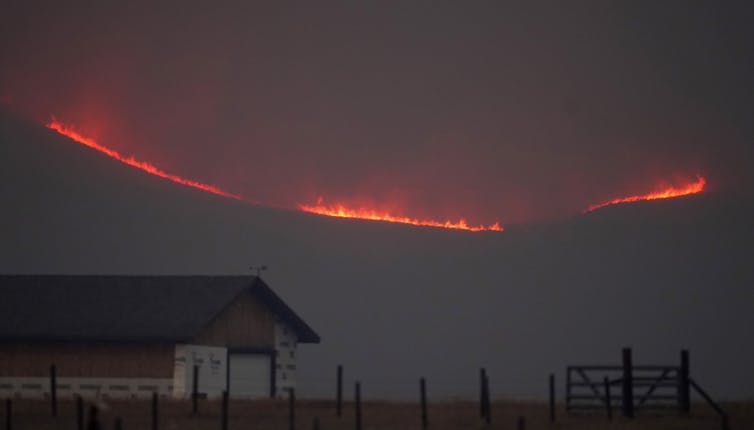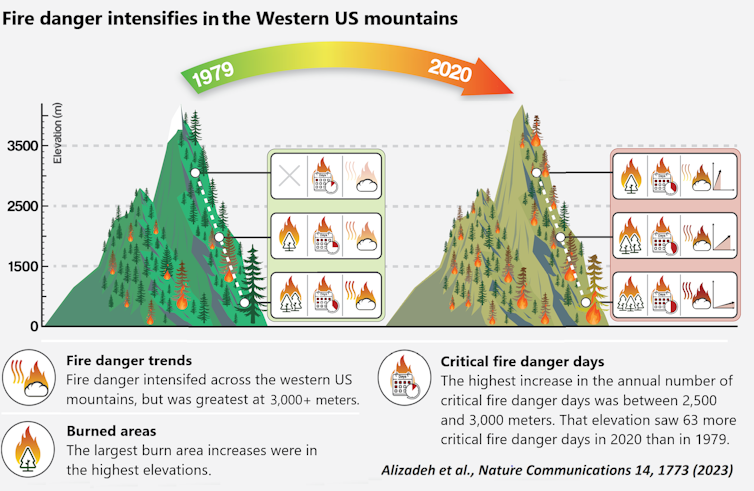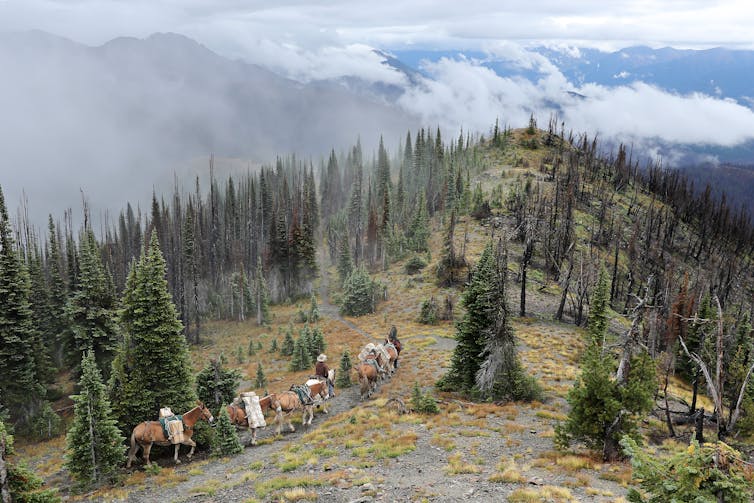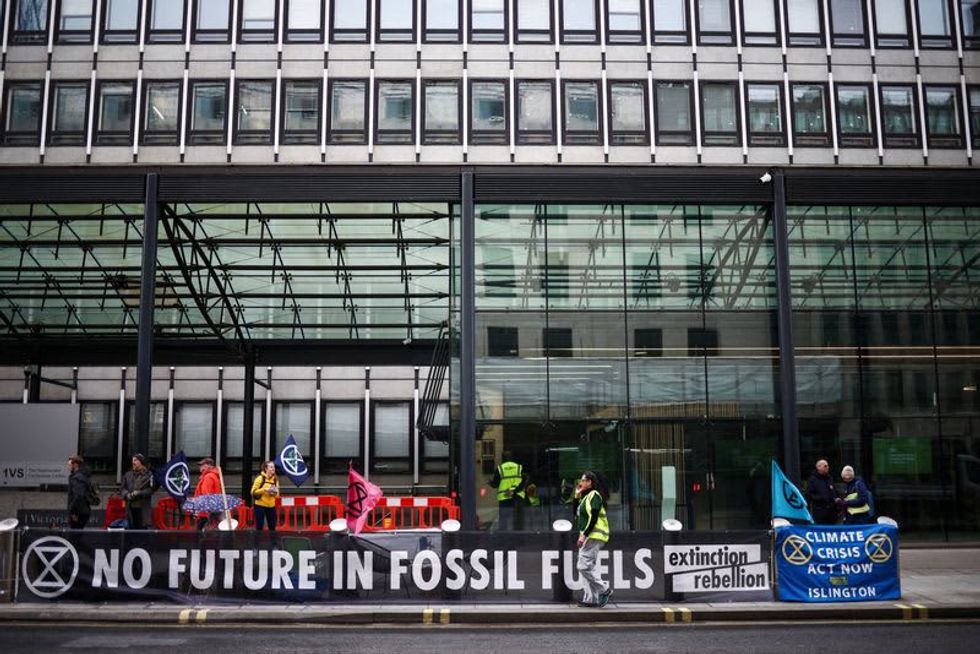
By Tim McLaughlin
April 22, 2023
(Reuters) - Hatfield’s Ferry Power Station, a Pennsylvania coal-fired power plant, stopped producing electricity in 2013. Its closure came in a wave of coal-plant shutdowns triggered by competition from cheaper, cleaner natural gas and incentives in the U.S. Clean Air Act.
But the facility’s legacy of smog pollution continued long after it closed.
That’s because a loophole in clean-air regulations allowed Hatfield’s Ferry to collect emissions allowances under a cap-and-trade program for five years after it shut down. The plant’s owner then sold those credits to other plants, which can use them to stay in compliance when they exceed their own regulatory budget of allowances. Among the beneficiaries: the biggest emitter of smog-causing gas in America’s power sector.
Under the federal program, states distribute a certain number of allowances to power plants annually. Each one permits one ton of nitrogen oxide (NOx) emissions. NOx contributes to smog, which causes respiratory problems and premature death.
If a plant doesn’t use all of its allowances, it can sell them to other plants. The credits are valuable because they can provide plants a cheaper alternative to buying and operating hugely expensive pollution-control equipment.
The provision grants closing plants a credit windfall: They can sell all of their allowances because they are no longer generating smog themselves.
A Reuters review of federal data shows the owner of Hatfield’s Ferry, FirstEnergy Corp, sold most of the credits it received after closing the plant or transferred them to other FirstEnergy-owned facilities. One batch, worth an estimated $1.2 million, helped Missouri’s New Madrid Power Plant in 2021 comply with emission regulations while generating the most smog-producing NOx in the nation. Reuters found dozens of other examples of coal plants using credits from closed facilities to help comply with pollution rules over the past five years.
FirstEnergy Corp declined to comment.
As the climate-change fight intensifies, governments worldwide have struggled to phase-out coal, among the dirtiest fossil fuels, without harming reliability and affordability of electricity. That issue and other environmental challenges are getting heightened attention today, April 22, on International Earth Day.
The issue highlights an unintended consequence of the U.S. EPA’s latest revision of the Cross-State Pollution Rule (CSAPR), first enacted in 2011 as a provision of the Clean Air Act. The measure is aimed at cutting air pollution from upwind states that harms air quality in downwind states.
The Environmental Protection Agency (EPA) last month moved to reduce the impact of closed-plant allowances by reducing the number of years a retired facility can collect them from five to two. But the previous policy had already injected the market with a huge volume of credits that will take years to work their way through the system: Between 2017 and 2020, for instance, the ratio of allowances available to comply with NOx-pollution regulations during the peak ozone season surged. In 2020, there were 2.5 allowances available for every ton of NOx pollution emitted by plants in the cap-and-trade program, compared to 1.5 allowances per ton in 2017, EPA disclosures show.
Retired-plant allowances fueled the liquidity. In 2020, about 20% of the 585,000 allowances available to cover 232,000 tons of emissions were from power plants that had retired at least one coal-fired unit in the past decade, federal data show.The power sector lobbied last year to keep the closed-plant credits flowing, according to letters sent to the EPA by utilities and electric cooperatives.
Associated Electric Cooperative Inc (AECI), the New Madrid plant’s owner, said in a statement that it was cheaper to buy allowances than run the facility’s pollution controls. “This is the EPA’s cap-and-trade allowance program working as designed,” AECI said.

But the program wasn’t working as the EPA intended. In 2021, the agency reduced allowances for power plants in 12 states to curb an oversupply in the NOx-credit market, according to rule changes published by the EPA.
The EPA took several more steps last month to reduce what it has described as a credit “glut,” the agency explained in a document detailing the changes. The problem: The oversupply depressed credit prices, encouraging plant owners to idle their pollution controls and use cheap credits for compliance, according to the document.
In response to questions from Reuters, the EPA said the credits for closed plants had no effect on the total number of credits given to all U.S. plants or the nation’s overall coal pollution. Overall pollution is capped, the agency said, by “the total volume of available allowances each ozone season and other design components.”
The EPA did not answer questions about why it continues to grant retired-facility allowances at all and why it chose to shorten the time frame.
The agency, however, said in disclosures explaining this year’s policy changes that the cheap-credit glut contributed to a surge in emissions at coal plants that have advanced pollution controls between 2017 and 2020. Constellation Energy Corp, which generates electricity from renewable sources and oil-fired power plants, blamed allocations to retired plants in a June 2022 letter to the EPA: “Continuing to allocate allowances to a retired unit inappropriately saturates the allowance market, deterring emissions reductions.”
The issue persisted last year, EPA data show, when a third of the 121 coal plants with the most advanced pollution controls produced NOx above what the agency calls an optimal level.
The EPA has long maintained that the retired-plant credits incentivize owners to close inefficient facilities. But now, with abundant government and market incentives to produce renewable energy, the extra credits will have minimal influence on shutdown decisions, the EPA said in its finalized March rule.
Elena Krieger, who oversees scientific research at PSE Healthy Energy, a California-based policy institute, was shocked when she learned about the retired-plant credits. She fears that trading of these allowances enables active plants to boost NOx emissions, harming public health in nearby and downwind communities.
“I was unaware of the practice and am somewhat horrified,” Krieger said.

In its 2021 deal, Hatfield’s Ferry traded more than 5,000 allowances to New Madrid’s owner, AECI, according to EPA transaction data. The sale terms were not disclosed, but NOx allowances traded at about $225 per ton at the time, according to S&P Global’s Market Intelligence.
That’s a bargain for coal plants with the most advanced pollution controls, which would otherwise spend $900 to $1,600 to remove a ton of NOx with their equipment, according to EPA estimates.
New Madrid cut back its pollution controls and chuffed out NOx at a high rate during that period, using credits to maintain compliance. During the 2021 ozone season, New Madrid’s pollution was five times higher than average among coal plants participating in the NOx-reduction program, EPA data show. Over the past five years, New Madrid has produced more NOx than any other U.S. power plant.
AECI said advanced NOx-pollution controls such as selective catalytic reduction (SCR) can limit a plant’s electricity production. The cooperative acknowledged it has taken New Madrid’s SCR offline to boost output, which it argues improves grid stability.
The New Madrid plant appears to be taking steps to reduce pollution. AECI agreed with Missouri regulators in October 2022 to operate its SCR pollution controls at least 95% of the time during the peak-ozone season, extending from May 1 to Sept. 30. The EPA is reviewing the agreement for approval.
Still, AECI contends federal regulators are moving too fast in the renewable-energy transition. The company told Reuters the hurried transition comes “at the expense of stable and reliable electricity” with potentially “very serious consequences” during severe-weather power outages.
RED-STATE PROTESTS
Utilities and lawmakers in Republican-controlled states have pushed hard against curbs on coal pollution, including the EPA’s latest NOx-reduction regulations.
“We remain concerned the rule will cause a large number of premature coal retirements that will increase the risk of electricity shortages,” said Michelle Bloodworth, CEO of America’s Power, a coal-industry trade group.
Ken Ivory, a Republican state lawmaker in Utah, told Reuters: “It really is just mind-numbing that the biggest obstacle to reliable electricity in our state is our federal government.”
The EPA’s latest update to cross-state emissions regulations, dubbed the Good Neighbor rule, caps the annual percentage of allowances that can be banked for future use in each state at 21%, another measure aimed at gutting the pollution-credit glut.
That and other policy changes have sparked a massive increase in allowance prices, which are now running at about $10,000 apiece, according to Roman Kramarchuk, head of future energy outlooks at S&P Global Commodity Insights.
But even at that price, NOx allowances will find buyers among coal plants, including those that operate at high pollution rates. When natural gas and wholesale power prices spike, some plants can still make money with allowance prices above $30,000, according to S&P.
(Reporting by Tim McLaughlin; editing by Richard Valdmanis and Brian Thevenot)




































